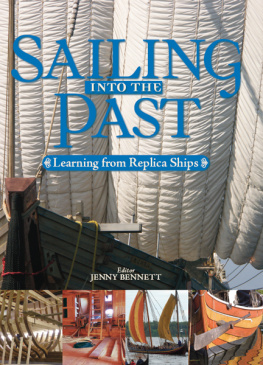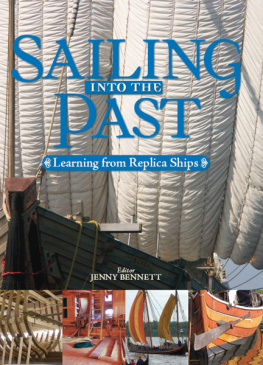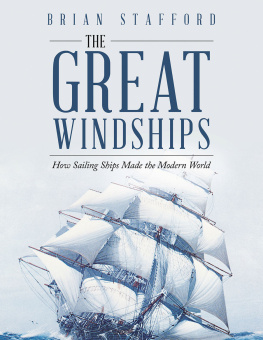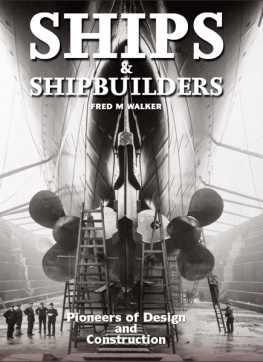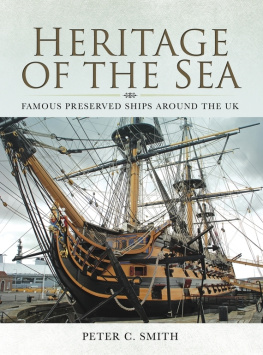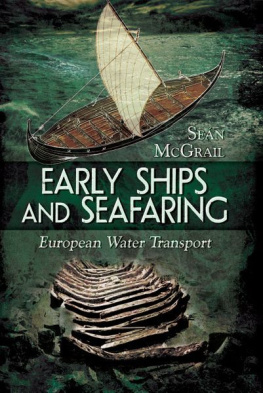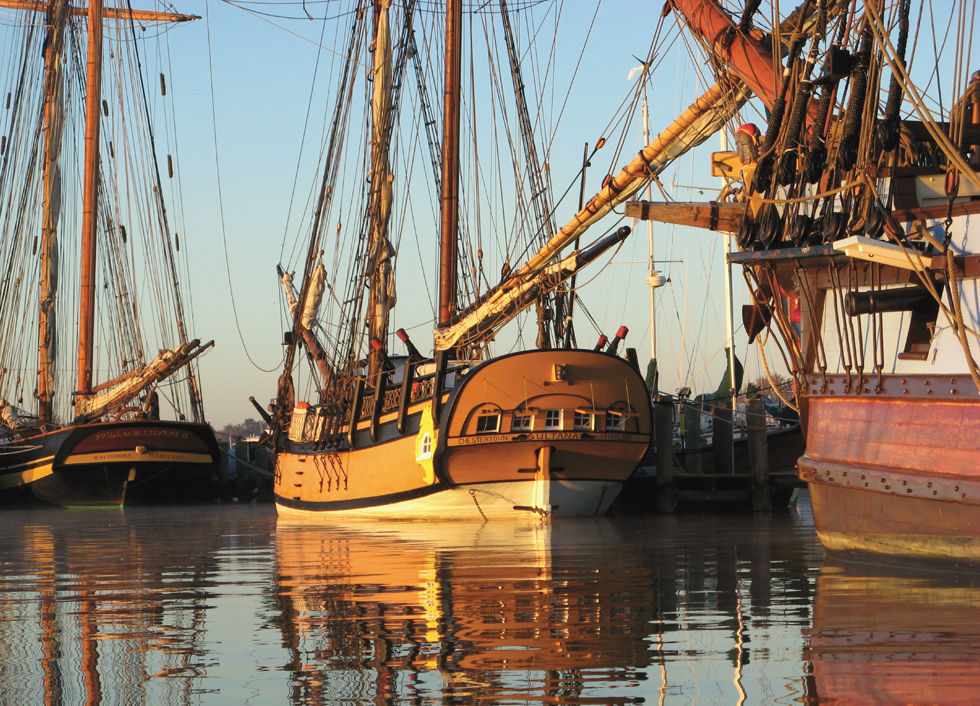
Sultana at rest Chestertown, alongside the visiting replicas Kalmar Nyckel (right) and Pride of Baltimore II.
(Christopher Cerino)
Copyright Seaforth Publishing 2009
Text copyright individual contributors 2009
First published in Great Britain in 2009 by
Seaforth Publishing,
Pen & Sword Books Ltd,
47 Church Street,
Barnsley S70 2AS
www.seaforthpublishing.com
British Library Cataloguing in Publication Data
A catalogue record for this book is available from the British Library
ISBN 978 1 84832 013 0
PDF ISBN: 978 1 78346 566 8
EPUB ISBN: 978 1 78383 032 9
PRC ISBN: 978 1 78346 799 0
All illustration provided by the contributors unless credited otherwise.
All rights reserved. No part of this publication may be reproduced or
transmitted in any form or by any means, electronic or mechanical,
including photocopying, recording, or any information storage and
retrieval system, without prior permission in writing of both the
copyright owner and the above publisher.
Typeset and designed by Roger Daniels
Printed and bound in Thailand through Printworks International Ltd
Editor
Jenny Bennett
Contributors
Burkhard Bange
Douglas Brooks
Nick Burningham
Andrew Davis
Wolf-Dieter Hoheisel
Rikke Johansen
Antonia Macarthur
Sen McGrail
Drew McMullen
Colin Palmer
Boris Rankov
Richard Woodman
Peter Wrike
CONTENTS
Sailing into the Past
Experimental Archaeology: Replicas and Reconstructions
Measuring Performance under Sail
The Trireme
The Viking Ships of Skuldelev
The Hanseatic Cog
The Caravel
Early Seventeenth-Century Ships
The Jamestown Replicas
Bezaisen: Japans Coastal Sailing Traders
The Schooner Sultana
HM Bark Endeavour
The Pride of Baltimore

THE RISE OF THE REPLICA
F OR THOSE OF US who dream of being able to experience life in another time, another place, the rise of the replica ship in modern culture offers new and exciting possibilities. Now, even in the dawn of the twenty-first century, it is possible to bend ones back to the oar of a trireme, hunker down on the floorboards of a Viking longship on a gruelling ocean voyage, stand on a yard high above a wooden deck and bend hemp lines to cotton canvas. To do any of these is to be transported into another age, when life was surely more fundamental than anything most of us are likely to experience in our everyday modern lives.
But is there more to the replica than the fulfillment of dreams? And how do we balance the desire of historians and archaeologists to get it right at any cost with the need to offset the high price of building a ship? We live in a bureaucratic and litigious world in which a fully-operational passenger-carrying vessel must be equipped with safety features never before considered necessary, and once such features are incorporated the status of replica is instantly compromised. Can a ship built to eighteenth-century plans with eighteenth-century techniques and materials be deemed authentic if it carries a diesel engine and electric ovens? And if we agree that such a hybrid cannot truly be a replica is there any justification for its construction? And what of those replicas built not from plans but from research, hypothesis and historical theory? Can we ever definitively say, this is it, just as it would have been? And, if not, is there a defence for building such a vessel?
Well, yes, for there is surely no other man-made artefact of such extraordinary complexity, such longevity in our collective history, such wide-reaching variety of which we have such limited hands-on experience than the sailing vessel. And in the absence of an original, only the replica compromised or not can give us much of the knowledge we seek. Without the replica trireme, longship, caravel, bark it would surely be impossible to truly understand them.
This book is a behind the scenes look at some of the most authentic and noteworthy re-creations of sailing vessels through the ages. Their individual stories reveal a common thread and purpose: to recreate something that no longer survives in its original form and seek practical truths about ancient craft; to further our understanding of the achievements of our ancestors and, in so doing, learn more about ourselves and our place in history; to take the hypotheses of academics and turn them into realities that will either prove or disprove the theories.
During the twentieth century a sea change occurred in the building of historic vessels. Where once it was enough to take a wooden hull, carve some decorative woodwork onto a sterncastle, and hoist a few square sails to claim it as the true Golden Hinde, today even the most casual observer demands that we prove it. Thus, the replicas described in this volume are representative of a new breed: a breed founded in solid research that has been assembled over many decades and is still growing. In choosing which, of the many, examples should be included we selected vessels that each represent a different era of seafaring and for which there are no extant prototypes; that, of their type, are as authentic as could be, given our current knowledge and the compromises brought to bear by modern society; that are exceptional in their quality of build and level of research. Certainly there are others that could have been included but this book is not a directory, rather it is a cross section that illustrates the rise of the replica and reveals the ongoing developments in the search for authenticity and use of such vessels.
No doubt, within a few years, new evidence will have been unearthed to contradict some of the findings even of these most respected examples. Nevertheless, they prove that the building of such reconstructions is invaluable in our pursuit of historical understanding. The sailing vessel, large and small, has been central to human history: it took men to war, carried goods between far-flung nations, explored uncharted, even unknown, lands. While we could theorise and argue about the settling of Polynesia by the South Americans, if Thor Heyerdahl had not built Kon-Tiki, would we have ever known that a primitive reed boat could sail across thousands of miles of the Pacific Ocean? And if no one had reconstructed and sailed a Viking longship would we have truly believed that such vessels could sail to windward and could, therefore, have sailed from Scandinavia to North America? Inevitably, as our lat-terday replicas bring answers to questions, they beg ever more questions, but as the puzzles are solved these extraordinary reconstructions bring us closer to a fuller understanding and enable us to sail ever more purposefully into the past.
JENNY BENNETT
The sailing vessel, in all its many guises, was a noble creation. William Morris, that great nineteenth-century aesthete, said that one should possess nothing that was neither useful nor beautiful; while his contemporary, John Ruskin, said: Take it all in all, a ship is the most honourable thing a man has ever produced. While all sailing vessels were useful they were not always beautiful, though the majority were and certainly those of the late nineteenth century the products of the Clyde, the Wear and Aberdeen were as near to the sublime in their union of fitness for purpose with satisfaction to the eye as was possible. All, however, have their own enchantment.

